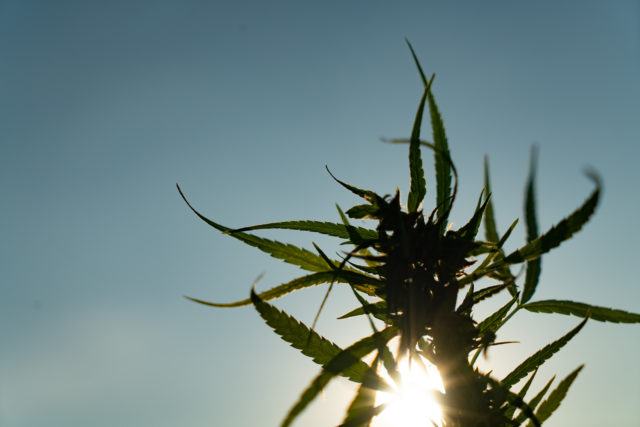
When the National Cannabis Industry Association (NCIA) approached Kaitlin Urso last year about writing the recently released “Environmental Impacts, Best Management Practices and Policies for the Cannabis Industry” report, she knew it was a deeply needed resource. But she also understood it wasn’t something she could do alone.
The NCIA’s goal was to create a guide for cannabis businesses to recognize their environmental impacts and to understand how they can invest in sustainable systems; but also a guide for governments to craft cannabis policy that incentivizes and promotes sustainability as a tenet of the industry.
Urso is the environmental consultant, project manager and small business assistance program specialist for the Colorado Department of Public Health and Environment (CDPHE). She’s worked with craft breweries to facilitate more environmentally sustainable brewing practices, and she’s currently working with Colorado’s cannabis industry to institute similarly sustainable systems for growing, packaging, distributing and selling cannabis.
Still, even with such extensive environmental experience behind her, she knew that undertaking a project like the NCIA report would require a diverse team of specialists. That’s because cannabis, as an industry, is not very green — it’s pollutive and resource-intensive, and impacts the environment in many different, nuanced ways.
“I really felt like I couldn’t necessarily comment on all the impacts,” Urso says. She was happy to lead the project for NCIA (the largest cannabis trade association in the U.S.) and act as an unbiased third-party, but Urso wanted it to be a collaborative effort.
“So we really tried to get a good mix of experts and people from government and private industry to really have a diverse group,” Urso says. “I think we struck a good balance with all the authors that we had.”
The report reviews the impacts cannabis has on soils, land use, water, energy generation and consumption, air quality and the challenges associated with waste. For each of those impacts, the report offers recommendations for best management practices that businesses in the industry can easily invest in and adopt. Then it outlines policy considerations for governments seeking to build a sustainable future for their cannabis industry.
It also explains the financial incentives for sustainable investments and developments. The authors make the case that sustainable best practices like proper land use, water conservation, air quality control, energy efficiency and waste reduction all represent ways to actually save money. Urso says that businesses will be able to take lessons from this paper, apply them to their operations and actually see a return on that investment. For states, the report is meant to be a tool to build a sustainable cannabis industry from the ground up, using environmentally conscious policy and incentives.
“I think that this is exciting timing, given that in the last election cycle a handful of states legalized new marijuana markets,” Urso says, adding that New Jersey is already planning on adopting some of the policy recommendations.
The policy considerations outlined in the report go into great detail explaining the recommendations and how to implement them. Generally, though, it recommends improving water quality through usage limits and regional disposal requirements; it recommends implementing energy policies that set climate goals, and incorporating structural and financial incentives, education and transparent access to energy and market data; and it recommends protecting land and soil health by requiring final product testing to reduce unregulated fertilizers, toxic pesticides, and other harmful chemicals from entering the environment.
Perhaps the most influential and sweeping environmental policy recommended in the report, though, is that of federal legalization. The illicit cannabis market, by nature, is unregulated — meaning there’s no incentive for participants to practice environmentally sustainable means of production.
Because of that, black market cannabis contributes to all other impacts outlined in this report: Illegal grows divert water without concern for usage limits; they often use toxic, prohibited pesticides and fertilizers; they protect their grows from animals (and humans) with trapping snares, poison or firearms; they use generators, or tap into the electrical grid for power; and more often than not, when an illegal grow is abandoned, it isn’t cleaned up.
“One of the primary goals in supporting the shift to environmental excellence should be to displace the unregulated, untested and unsafe illicit market,” the report reads.
And with the possibility of federal legalization looming under a Biden presidency, Urso sees an unprecedented opportunity for environmentally sustainable practices to become the national standard from the outset of the national industry.
“I think this paper is crucial to getting us all on the same baseline conversation,” Urso says. “In order for the cannabis industry to really move forward in sustainability we have to recognize where we’re at today, what our current impacts are and where the opportunities for sustainable improvements are.”














